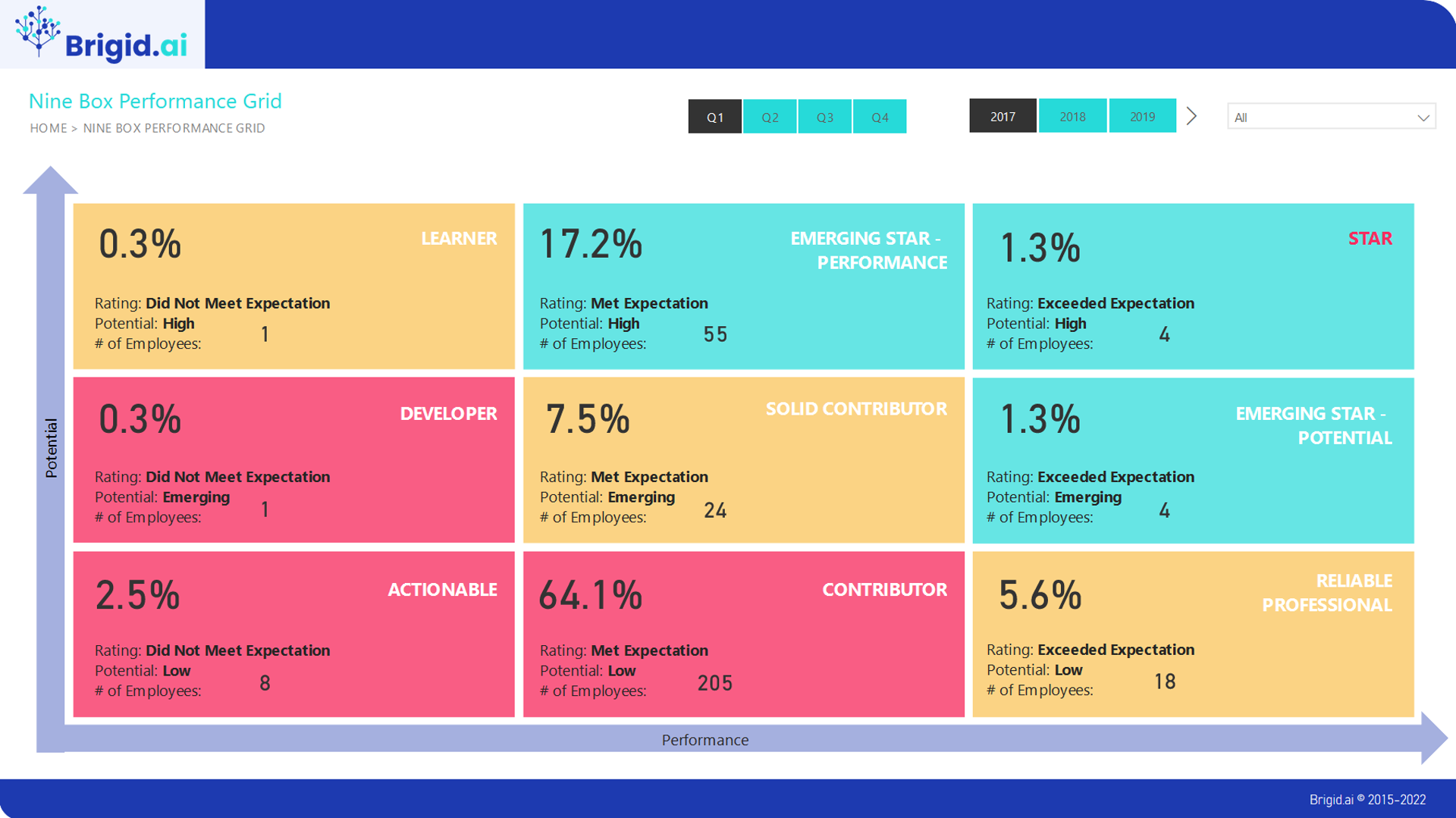P1]
In today’s data-driven world, organizations are increasingly recognizing the power of data to improve decision-making across all facets of their operations. Human Resources (HR), traditionally viewed as a function driven by intuition and experience, is no exception. HR analytics, the application of data analysis techniques to HR processes and data, is rapidly transforming the way organizations manage their workforce, leading to improved employee engagement, reduced turnover, and ultimately, a stronger bottom line.
This article delves into the world of HR analytics, exploring its definition, key components, benefits, challenges, and practical applications. We will also address frequently asked questions and offer concluding thoughts on the future of this vital field.
What is HR Analytics?
HR analytics, also known as people analytics or talent analytics, is the systematic identification and quantification of the people drivers of business outcomes. It involves collecting, analyzing, and interpreting HR-related data to gain insights into workforce trends, employee performance, and the impact of HR programs. It moves beyond simple reporting and focuses on uncovering patterns, predicting future trends, and providing actionable insights that inform strategic decision-making.
Think of it as using data to answer critical questions about your workforce, such as:
- What are the key drivers of employee turnover?
- Which recruitment channels yield the highest quality candidates?
- What training programs are most effective in improving employee performance?
- How can we predict which employees are at risk of leaving the company?
- What is the impact of our employee engagement initiatives on productivity?
By answering these questions, HR analytics empowers HR professionals to move from a reactive to a proactive approach, enabling them to make data-driven decisions that optimize workforce performance and contribute to the organization’s overall success.
Key Components of HR Analytics:
HR analytics is not a single tool or technique but rather a holistic approach that encompasses several key components:

Data Collection and Management: This involves gathering relevant data from various sources, including HRIS (Human Resource Information Systems), performance management systems, employee surveys, payroll systems, and even external data sources like social media and industry benchmarks. Ensuring data accuracy, consistency, and security is paramount.

Data Cleaning and Preparation: Raw data often contains errors, inconsistencies, and missing values. This step involves cleaning and preparing the data for analysis, including removing duplicates, correcting errors, and transforming data into a usable format.
Data Analysis and Visualization: This is where the magic happens. Using statistical techniques, data mining, and machine learning algorithms, analysts explore the data to identify patterns, trends, and relationships. Data visualization tools are then used to present these insights in a clear and understandable format, such as charts, graphs, and dashboards.
Interpretation and Actionable Insights: The insights generated from data analysis are only valuable if they are interpreted correctly and translated into actionable recommendations. This requires a deep understanding of the business context and the ability to communicate complex findings to stakeholders in a clear and concise manner.
Implementation and Evaluation: Once recommendations are made, they need to be implemented and their impact needs to be evaluated. This involves tracking key metrics, measuring the effectiveness of interventions, and making adjustments as needed. This iterative process ensures that HR analytics continues to drive positive change within the organization.
Benefits of HR Analytics:
The benefits of implementing HR analytics are numerous and far-reaching:
Improved Employee Retention: By identifying the drivers of employee turnover, HR analytics can help organizations develop targeted retention strategies, such as offering competitive compensation, providing opportunities for career growth, and improving work-life balance.
Enhanced Recruitment and Selection: HR analytics can optimize the recruitment process by identifying the most effective sourcing channels, predicting candidate success, and reducing time-to-hire. This leads to higher quality hires and reduced recruitment costs.
Increased Employee Engagement: By analyzing employee survey data and other feedback mechanisms, HR analytics can identify areas where employee engagement can be improved. This allows organizations to create a more positive and supportive work environment, leading to increased productivity and reduced absenteeism.
Improved Performance Management: HR analytics can help organizations identify high-performing employees, understand the factors that contribute to their success, and develop targeted training and development programs to improve overall performance.
Reduced Costs: By optimizing HR processes, such as recruitment, training, and compensation, HR analytics can help organizations reduce costs and improve efficiency.
Better Decision-Making: HR analytics provides data-driven insights that enable HR professionals to make more informed decisions about workforce planning, talent management, and HR program design.
Increased ROI on HR Investments: By measuring the impact of HR programs and initiatives, HR analytics can help organizations demonstrate the value of HR and justify investments in human capital.
Improved Diversity and Inclusion: HR analytics can be used to identify and address biases in hiring, promotion, and compensation processes, leading to a more diverse and inclusive workforce.
Challenges of Implementing HR Analytics:
While the benefits of HR analytics are significant, implementing it successfully can be challenging. Some of the key challenges include:
Data Quality and Availability: HR data is often fragmented, inconsistent, and incomplete. Ensuring data quality and availability is crucial for accurate and reliable analysis.
Lack of Analytical Skills: Many HR professionals lack the statistical and analytical skills required to effectively analyze HR data. Investing in training and development is essential.
Data Privacy and Security: HR data is highly sensitive and must be protected from unauthorized access and disclosure. Organizations need to implement robust data security measures and comply with relevant privacy regulations.
Resistance to Change: Some HR professionals may be resistant to adopting a data-driven approach, preferring to rely on intuition and experience. Effective communication and change management are crucial for overcoming this resistance.
Lack of Executive Support: Successful HR analytics initiatives require strong support from senior management. Demonstrating the value of HR analytics and securing buy-in from key stakeholders is essential.
Choosing the Right Tools and Technologies: There are a wide variety of HR analytics tools and technologies available, making it difficult to choose the right ones for your organization’s needs. Careful evaluation and planning are essential.
Practical Applications of HR Analytics:
HR analytics can be applied to a wide range of HR functions, including:
Recruitment: Analyzing recruitment data to identify the most effective sourcing channels, predict candidate success, and reduce time-to-hire. For example, analyzing application data to understand which universities produce the best-performing employees or predicting which candidates are most likely to accept a job offer based on their profile and experience.
Training and Development: Evaluating the effectiveness of training programs, identifying skill gaps, and developing personalized learning paths. For example, analyzing performance data to identify employees who would benefit from specific training programs or measuring the impact of training on employee productivity and performance.
Performance Management: Identifying high-performing employees, understanding the factors that contribute to their success, and developing strategies to improve overall performance. For example, identifying the key behaviors and skills that differentiate high-performing employees or predicting which employees are at risk of underperforming.
Compensation and Benefits: Analyzing compensation data to ensure pay equity, benchmarking compensation against industry standards, and optimizing benefits packages to attract and retain talent. For example, identifying gender pay gaps and implementing strategies to address them or analyzing employee preferences to design benefits packages that meet their needs.
Employee Engagement: Analyzing employee survey data and other feedback mechanisms to identify areas where employee engagement can be improved and developing targeted interventions to address these issues. For example, identifying the key drivers of employee engagement and developing strategies to improve these drivers or measuring the impact of employee engagement initiatives on productivity and retention.
Workforce Planning: Forecasting future workforce needs, identifying skill gaps, and developing strategies to ensure that the organization has the right talent in place at the right time. For example, predicting future hiring needs based on business growth projections or identifying skill gaps that need to be addressed through training or recruitment.
FAQ on HR Analytics:
Q: What are the prerequisites for implementing HR analytics?
A: You need a foundation of clean, accessible HR data, analytical skills within the HR team (or access to data scientists), and a clear understanding of the business problems you’re trying to solve. Executive support is also crucial.
Q: Is HR analytics only for large organizations?
A: No. While large organizations may have more data, even small and medium-sized businesses can benefit from HR analytics by focusing on key metrics and using readily available data sources.
Q: What are some common HR analytics metrics?
A: Common metrics include employee turnover rate, time-to-hire, cost-per-hire, employee engagement score, training effectiveness, and performance rating distribution.
Q: What tools are used for HR analytics?
A: A variety of tools are used, ranging from basic spreadsheet software like Excel to specialized HR analytics platforms and business intelligence tools like Tableau, Power BI, and SAP SuccessFactors.
Q: How can I get started with HR analytics?
A: Start small by focusing on a specific business problem. Identify the data you need, develop a simple analysis, and communicate your findings to stakeholders. Gradually expand your efforts as you gain experience and build confidence.
Q: How do I ensure ethical use of HR analytics?
A: Prioritize data privacy and security, be transparent about how data is being used, and avoid using data in ways that could discriminate against employees. Focus on using data to improve employee experiences and outcomes.
Conclusion:
HR analytics is no longer a futuristic concept but a critical capability for organizations that want to attract, retain, and develop top talent. By leveraging the power of data, HR professionals can move from a reactive to a proactive approach, making more informed decisions that drive business results. While there are challenges to overcome, the benefits of HR analytics are undeniable. As technology continues to evolve and data becomes more readily available, HR analytics will only become more important in the years to come. Organizations that embrace this trend will be well-positioned to thrive in the increasingly competitive global marketplace. The future of HR is data-driven, and those who embrace this change will be the leaders of tomorrow.



Leave a Reply